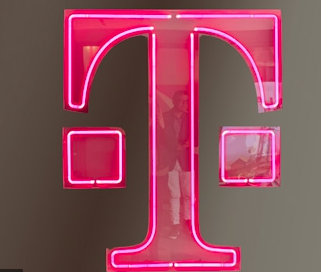If you’re in the market for a 5G cellular modem or router, you may want to consider its supported frequency bands. There are three types of 5G. Sub-6 (also called FR1) refers to low band frequencies below 6GHz, and mmWave (also called FR2) refers to frequencies over 24GHz. You also have mid band, or the C-band, which covers 4GHz to 8GHz. However, carriers are more focused on the range of 3.7 to 4.2GHz.
When 5G was initially rolled out, it used Sub-6 5G that stayed mainly below the 2GHz range. These frequencies were already used by 4G/LTE and even older 3G networks, so carriers had the necessary licenses to use them. This made it quick and easy for AT&T and T-Mobile to roll out 5G on top of their existing networks.
To this day, the most widely available 5G service in the U.S. is running on low band frequencies. Not only because it was the first service available, but because it covers the most distance. The downside is that in a lot of cases, the connection is only as good as LTE.
C-band is the next best for 5G. While the distance it covers is not as much as Sub-6, it does offer a better 5G experience. In comparison, mmWave runs off the higher frequencies so it does not travel as far. This however, is the truest version of 5G with its significantly faster speeds, lower latency, and high reliability.
Here’s a breakdown of the bands to look out for in the device specifications:
Sub-6/ 5G NR: n1, n2, n3, n5, n7, n12, n20, n25, n28, n38, n40, n41, n46, n48, n66, n71, n77, n78, n79, n83
C-band: n77, n78, n79
mmWave: n257, n258, n259, n260, n261
Due to its availability, a majority of the 5G products we carry will only support Sub-6/ NR (New Radio) bands. There are a handful that will also support all C-band frequencies. To check those out, see below.
- Cradlepoint R1900
- Cradlepoint E3000
- Cradlepoint W1850
- Cradlepoint W2000
- Cradlepoint W2005
- Digi EX50
- Inseego S2000e
- Inseego FG2000e
- Inseego FX2000e
- Peplink Balance 310X
- Peplink Balance 310 5G
- Peplink Balance 310 5G Fiber
- Pepwave MAX BR1 Pro 5G
- Pepwave MAX BR2 Pro
- Pepwave MAX Adapter 5G
- Pepwave MBX Mini
- Pepwave MAX HD2 MBX
- Pepwave MAX HD4 MBX
- Sierra Wireless MG90 5G
- Sierra Wireless XR80 5G
- Sierra Wireless XR90
Should you be lucky enough to have mmWave coverage in your location, stay tuned for the Cradlepoint W4005.



